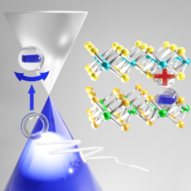
Pseudopotentials with spin-orbit coupling
Pseudopotentials are commonly used in simulations of condensed matter to increase the computational efficiency. In CP2K, Goedecker-Teter-Hutter (GTH) pseudopotentials [1, 2] are used. CP2K can efficiently make use of the analytical form of GTH pseudopotentials based on Gaussian functions. In this project, GTH pseudopotentials will be extended to treat relativistic effects of the electron motion in lowest-order perturbation theory [3]. The starting point will be the form (D19) in Ref. [2] of the GTH pseudopotentials. Applications of scalar-relativistic pseudopotentials are very broad, from metal surfaces to two-dimensional transition metal dichalcogenides, where spin-orbit coupling can substantially influence the band structure [4].
[1] S. Goedecker, M. Teter, and J. Hutter, Separable dual-space Gaussian pseudopotentials, Phys. Rev. B 54, 1703 (1996).
[2] C. Hartwigsen, S. Goedecker, and J. Hutter, Relativistic separable dual-space Gaussian pseudopotentials from H to Rn, Phys. Rev. B 58, 3641 (1998).
[3] M. Reiher and A. Wolf, Relativistic Quantum Chemistry, Wiley (2014).
[4] K.-Q. Lin et al, Narrow-band high-lying excitons with negative-mass electrons in monolayer WSe2, Nat. Commun. 12, 5500 (2021), see Supplementary Information, Supplementary Figure 1.

